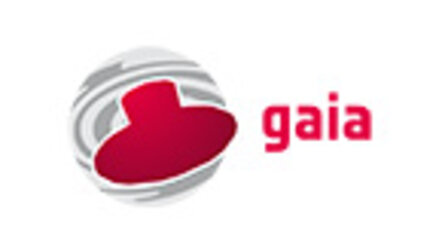Mission control ready for Gaia launch
Shortly after a powerful Soyuz launcher lofts Gaia, ESA’s new star mapper, into space on Thursday, teams on the ground will establish initial radio contact. Even then, tension will run high in ESA’s mission control as Gaia must still perform a critical automatic sequence.
An astrometry mission, Gaia will observe a thousand million stars on average 70 times over a five-year period.
It will precisely chart their positions, distances and movements, and is expected to discover thousands of new celestial objects, such as extrasolar planetary systems and brown dwarfs. It will also observe hundreds of thousands of asteroids within our own Solar System.
The first step in its journey is set to happen on 19 December, when it will be launched towards the Sun–Earth L2 orbital position on a Soyuz rocket from ESA’s Spaceport in Kourou, French Guiana.
Teams complete months of training

Gaia will be controlled from ESA’s European Space Operations Centre (ESOC) in Darmstadt, Germany, where engineers are ready after months of intensive preparations and simulations.
The team will monitor the satellite 24 hours a day during the crucial Launch and Early Orbit Phase – the famous LEOP – which will last for around four days, and will focus around the time that Gaia separates from the Soyuz upper stage 42 minutes after liftoff.
Tense minutes in control room
Before separating, Gaia will ‘phone home’, sending a first radio signal to ESA’s Australian Perth ground station to inform controllers of its immediate health status. Signals will subsequently be picked up by several other of the Agency’s Estrack ground stations.

“But after separation, Gaia must still perform a critical automated sequence that includes pressurising its attitude control thrusters and deploying its sunshield, a very delicate step,” says Dave Milligan, Gaia Spacecraft Operations Manager.
During the sequence, Gaia will be in ‘free drift’, meaning that its attitude in space is not controlled and separating from its launcher may cause it to spin or tumble. As a result, it may rotate out of line-of-sight radio communication with the stations below.
“During about 17 minutes, we may lose radio contact, but so long as the onboard sequence runs OK, we’ll regain communications afterwards.
“Nonetheless, those minutes in the main control room will be very long and tense for us. Operations engineers never like being out of contact with their satellites,” says Dave.
LEOP sets mission on course
On 20 December, about 27 hours after liftoff, Gaia will perform a careful thruster burn for around 30 minutes to set course to its L2 orbital destination. The duration and timing of the burn will be refined depending on the launcher’s actual performance.


Access the video
In the LEOP period, running until 22 December, teams at ESOC will also switch on and check out onboard systems, including navigation gyroscopes and startrackers, and data systems, and route maximum power to the telescope’s decontamination heaters to protect the instrument as the spacecraft cools.
Once LEOP ends, Gaia will enter the commissioning phase, which lasts for about four and a half months. Its instruments and the ground systems to deliver the scientific data will be switched on, validated, calibrated and made ready for the first star survey.
L2: orbiting a virtual point in space
This will also be a tense period, as we have very little margin for error.
By 24 December, the mission teams will be able to switch to more regular daytime monitoring until the next critical milestone: entering orbit around L2. This is expected around 7 January, and will see the complete mission control team again working in ESOC’s main control room.
“We expect to enter orbit between 6 and 9 January. This is a more complex manoeuvre, done by firing Gaia’s thrusters in a ‘vectoring mode’, pushing in the desired direction whilst keeping the Sun away from the delicate instruments,” says Dave.
“This will also be a tense period, as we have very little margin for error. We’ll have paused the commissioning operations more than 24 hours beforehand, to minimise the risk of a ‘safe mode’ – or unexpected reboot – causing any delay of the burn.”
A second, smaller, burn may be required around 14 January.
Go for launch
The Centre’s formal Readiness Review was held on 25 November, and since then, teams have been maintaining their skills in a series of simulation sessions, some conducted together with the launcher control centre at Kourou.
In total, in the past year, there have been 44 training sessions and the teams have developed and confirmed over 700 flight control procedures.

Gaia is using several new technologies, including microthrusters instead of reaction wheels for attitude control, and an electronically steerable phased-array antenna instead of a steerable dish antenna.
Both are required because of the ultra-stable pointing and positioning needs of the mission and to achieve the necessary accuracy of the star survey.
“Due to its scientific goals, Gaia is a challenging mission to operate and we are using a number of flight control technologies for the first time,” says Andreas Rudolph, Gaia Flight Director.
“The teams at ESOC, across the Agency and at our industry partners have worked extremely hard to be ready for full operations, and we are looking forward to an excellent launch.”














 Germany
Germany
 Austria
Austria
 Belgium
Belgium
 Denmark
Denmark
 Spain
Spain
 Estonia
Estonia
 Finland
Finland
 France
France
 Greece
Greece
 Hungary
Hungary
 Ireland
Ireland
 Italy
Italy
 Luxembourg
Luxembourg
 Norway
Norway
 The Netherlands
The Netherlands
 Poland
Poland
 Portugal
Portugal
 Czechia
Czechia
 Romania
Romania
 United Kingdom
United Kingdom
 Slovenia
Slovenia
 Sweden
Sweden
 Switzerland
Switzerland




































